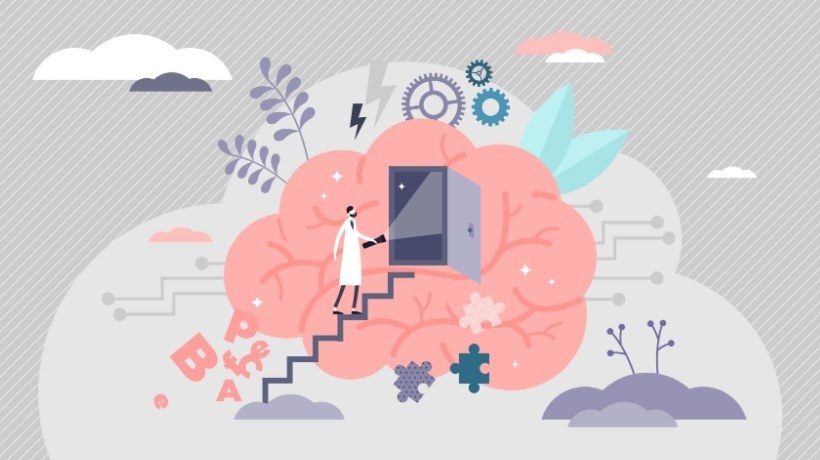A Human-Centric Approach To Learning Well-Being
For many years, adult learning has been considered one of the most conservative and slow-changing sectors. The way corporate training has been delivered to millions of people has pretty much stayed the same for the last twenty years, producing a low rate of knowledge retention and a low incentive to make use of that knowledge in both higher education and corporate training. It is only recently that research on behavioral science opened doors to understanding the role of the brain in the adoption of cognition and in designing change on human behavior, which are ultimately one of the outcomes expected from learning. Catering to today’s urgent need for learning, managing our well-being requires a model based on “learning how to learn” rather than a simple knowledge transfer. Combined with technology, learning should be scalable and measurable. It must also be relatable to human touch, and frictionless in the face of volatile human motivation.
According to KPMG’s Global CEO Outlook (2020), during the COVID crisis, CEOs have recognized that the lack of appropriate talent is the biggest risk for the future of their organizations. The immediate actions have been focusing on resources (often with less budget) and reprioritization of learning content. The priority was on skills to address the challenges due to the crisis, agility, self-management, and employee motivation. These types of skills and behavior building need to have a different learning framework as they are reliant on using human mental power to unlearn previous practices, creating processes for self-management, and reducing the natural resistance of our brain to change.
Technology made to empower humans to better take care of their mental resources is already available, but what organizations are craving for during these times is more human touch at work and a way to learn what is practical and gives sustainable results.
Technology And Well-Being
The idea of a clear separation between personal and professional life has been blurring away with the onset of the pandemic and the shift toward a work-from-home culture. Working from home might have excited some in the beginning but now long break-free hours in front of a screen at home have clearly taken a toll on the well-being of people.
There are several ways in which technology has contributed to our well-being. Some high technology devices like EMOTIV or meQuilibrium use artificial intelligence to study and analyze emotions so these can be integrated into organizations to help them monitor employee stress, and develop a strong, resilient workforce. Corporate apps with data-driven platforms have seen the light to make accessible individualized support: Peerfit, LifeXT, Moodbit, BetterUp provide standard solutions focused on well-being in an enterprise.
Most of the time learning and well-being involve low levels of engagement. Fortunately, technology allows for a more personalized approach according to the needs of employees as there are individual tech-driven wearables and applications like Fitbits, iWatch, Muse which help track indirectly the levels of stress and act as motivators and reminders to self-care. The massive level of health awareness and the provision to track progress digitally have motivated people to adopt a consistently healthy lifestyle and commit to achieving personal goals.
Technology makes creating support networks at the workplace easier. People can engage through various technology-driven apps, they can connect digitally, share challenges and progress. A tint of gamification also helps bring in healthy competition amongst colleagues and can keep them motivated. The use of technology has helped create individualization of self-management learning, allowing affordable scale, providing real-time insights on people's progress, and creating triggers for action in order to help the expected behavior change.
Learning in the workplace has been living a traditional path with technology supporting scale but not always efficiency on the adoption of learning. The advances in brain science and psychology can contribute to disrupting the way people learn.
Technology combined with brain science supports:
- relevancy and personalization of learning experience
- learning effectiveness at a granular level
- the instant feedback loop on actions performed
- tracking of abilities and psychological resources to perform new behaviors
- prediction of learning needs
- broadening access to knowledge, either passive or from a real person
How The Use Of A Brain-Friendly Learning Method Can Enhance The Impact Of Technology
A neuroscience-based learning process is about helping people create a process and a set of triggers that can help them automate the use of new knowledge. Applying a behavioral change and habit creation methodology allows us to empower learners to stay on track with their learning journeys, without them having to rely on motivation to keep them going. Furthermore, it is about combining technology with a human touch, not merely leaving people to go through the journey on their own, because individual support and feedback are an impactful part of learning.
A modular bite-size learning approach is an effective way to ensure people are:
- focused on what they need to know for their respective goals at that time
- able to apply learning immediately in real life
- not overwhelmed by unnecessary extra content
Conclusion
Learning new skills [1] to help employees self-manage their well-being and the need for self-actualization requires a shift in learning methodology, where the crafting of new behaviors is the only proof of success. People can only acquire these behaviors by consistent practice, personalization, continuous feedback, and measurement of progress. This is where a new learning model has its biggest impact and potential, not only to change individual learning but also corporate culture. The biggest disruption in adult learning that needs to happen is in the learning methodology. Technology is a vehicle to efficiently scale learning.
References:
[1] 10 Lifelong Learning Skills You Should Build Today










